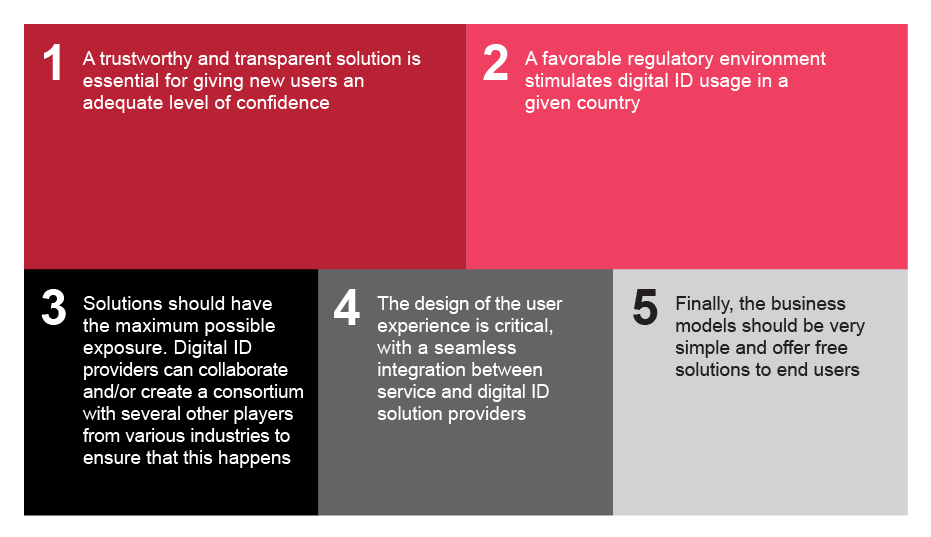Digital disruption and technological advances are affecting the way people interact with companies and organizations. Many services, from accessing government benefits to signing into banking, are now being conducted digitally.
Given these developments, the growth of the digital identity market is inevitable. Digital identity (or digital ID) will continue to be adapted to serve as the identifier for accessing government services and benefits, as well as many other online services related to banking, the workplace, education and health. It is needed for creating accounts, making transactions and subscribing to services. It thus performs a vital function, enabling people to do their everyday work and save time, while at the same time maintaining their security.
Currently, there are three digital ID systems being actively used in the market:
- centralized,
- third-party based
- and self-sovereign ID systems
All three systems still exist today, and are widely used. However, these systems are still evolving due to changing socio-cultural norms and regulatory frameworks. Each system has both benefits and limitations. While centralized models introduce greater security and trust, decentralized models allow more user control and lead to an enhanced customer experience. In terms of limitations, the centralized model is exposed to the risk of system failure, while the decentralized model involves complex governance and carries a higher risk of identity theft.
Key success factors
Telecom operators, banks, industrials and public institutions have all contributed to the development of digital ID solutions in various countries. There are various key success factors that are common to successful markets:

Issues, risks and threats
As they face many challenges and risks, very few markets and players have managed to achieve secure and transparent identification and authentication processes at scale. Today, the key issues for digital ID providers are:
- Regulation: The authorities must put in place clear and stable rules on how personal data should be collected, processed and shared. In addition, regulations that encourage the usage of digital ID, for example in South Korea with an obligation to check the age of user for all e-commerce transactions, boosted the adoption of this technology and created a well-developed ecosystem beyond this particular use-case
- Customer experience: As digitalization has placed customers at the center of a company’s business operations and offerings, they need to be provided with a seamless experience. Indeed, this has become a prerequisite for all digital applications. Players need to pay attention to the customer journey and focus on launching customer-centric solutions. Finding the right balance between security and convenience is one of the most significant challenge for digital ID solution providers.
- Scale and coverage: One of the main obstacles involves persuading users to adopt digital ID solutions. In order to achieve an efficient and trustworthy system, digital ID providers need to have a broad customer base spanning various customer segments. However, users tend to avoid unproven systems, which in turn prevents further development of the services (the chicken and egg syndrome)
- Monetization: Players should monetize those solutions for which end users are reluctant to pay additional fees for digital ID applications. There is a growing number of use cases for which users are willing to pay, particularly in developed European countries, yet the volume of such cases is still limited
Conclusion
Digital ID providers must take a step back and adopt a systematic approach. To succeed and expand in their field, they need to carefully assess the current market, learning from past successes and failures.
Digital ID providers should constantly adapt their strategic positioning within the value chain. By prioritizing customer segments with the highest potential and partnering with relevant solution providers, players can secure the right to win in this burgeoning market.
Contact Us
You can contact us to learn more about Strategy& Türkiye solutions
Contact us



